cultură şi spiritualitate
Jesuits in China, Part 2
Learn about the intrigue, spying, and political and religious opposition that would lead the Jesuits to be banned from China for almost 100 years.
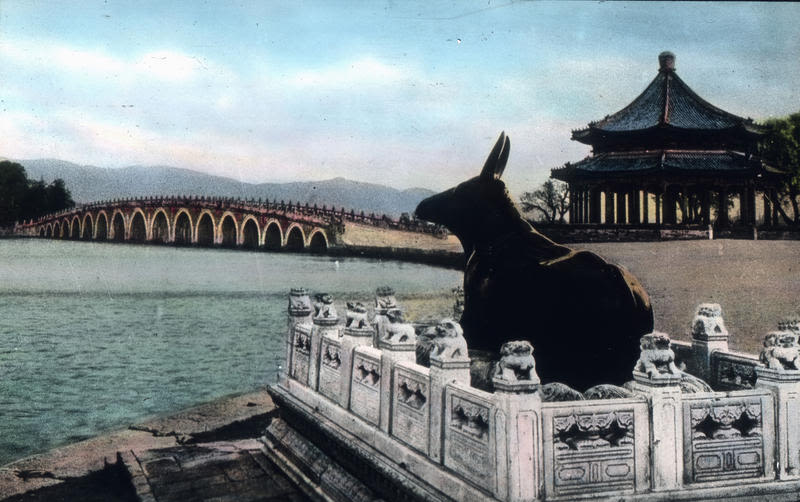
You might have heard of the Chinese zodiac, made up of 12 animals each representing one year in the 12-year cycle of a lunar calendar. One of the most famous depictions of these zodiac signs comes in the form of 12 bronze zodiac animal heads that used to be part of an ingeniously crafted water clock fountain. These bronzes, stolen during the looting of the Summer Palace in the second Opium War, were not designed and crafted by the Chinese, but were made by Jesuits. But how did Jesuits end up constructing a whole Western Pavilion in the Imperial Gardens of Beijing?
In the 17th Century the Jesuit order had succeeded in gaining the favour of the Chinese emperor, starting a long tradition of cultural exchange between the West and China. Possessing knowledge of astronomy and mathematics, The Chinese entrusted Jesuits with important missions, among which was the establishment of a more precise calendar. The German Jesuit Adam Schall (1592-1666) was put in charge of the imperial observatory of Beijing, as was Ferdinand Verbiest (1623-1688), a Flemish missionary.

Jesuits created engines to calculate the movements of the stars and telescopes to observe them. They also used their knowledge of geography to create intricate maps.

To respond to the Chinese interest in western technology, Jesuit scholars wrote books concerning science, physics and mechanics, and translated works by important historic mathematicians such as Euclid and Pythagoras into Chinese.
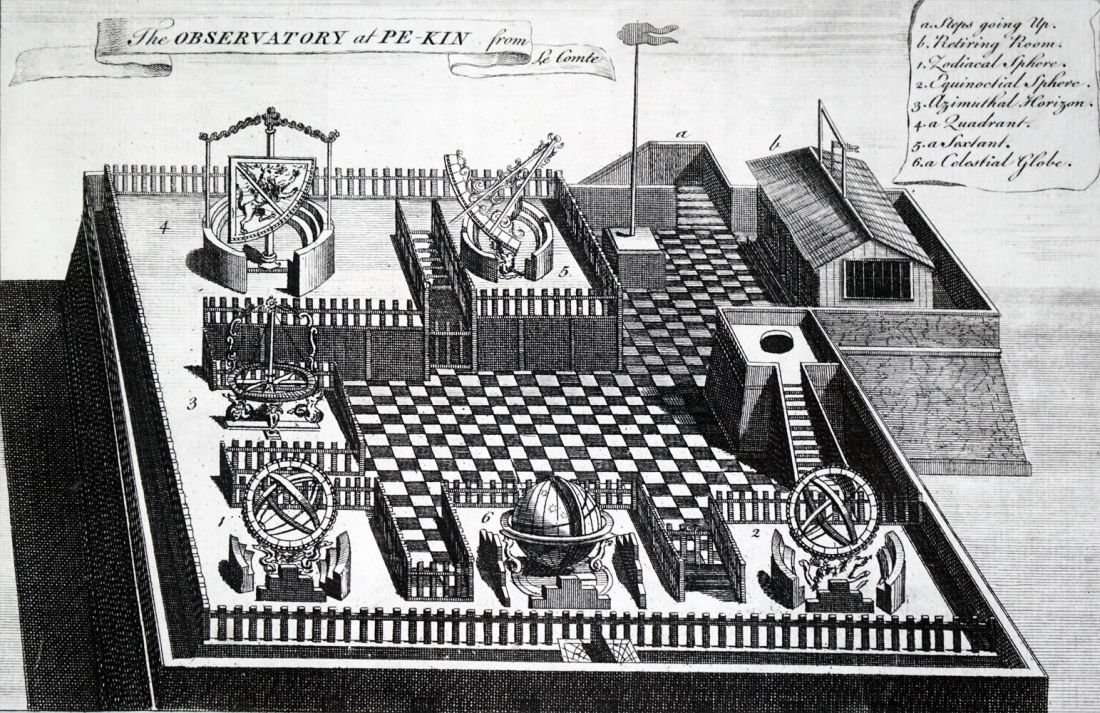
Another important contribution of the Jesuits is to be situated in the field of the arts, including painting, architecture, gardening and music. They combined European artistic practices, such as oil painting and portrait art, with Chinese techniques such as ink painting on silk. The French painter Jean Denis Attiret (1702-1768) produced several portraits of officials and ladies of the Qing court. One of his most famous works is the portrait of empress Ulanara (1718-1766), second spouse of emperor Qianlong.
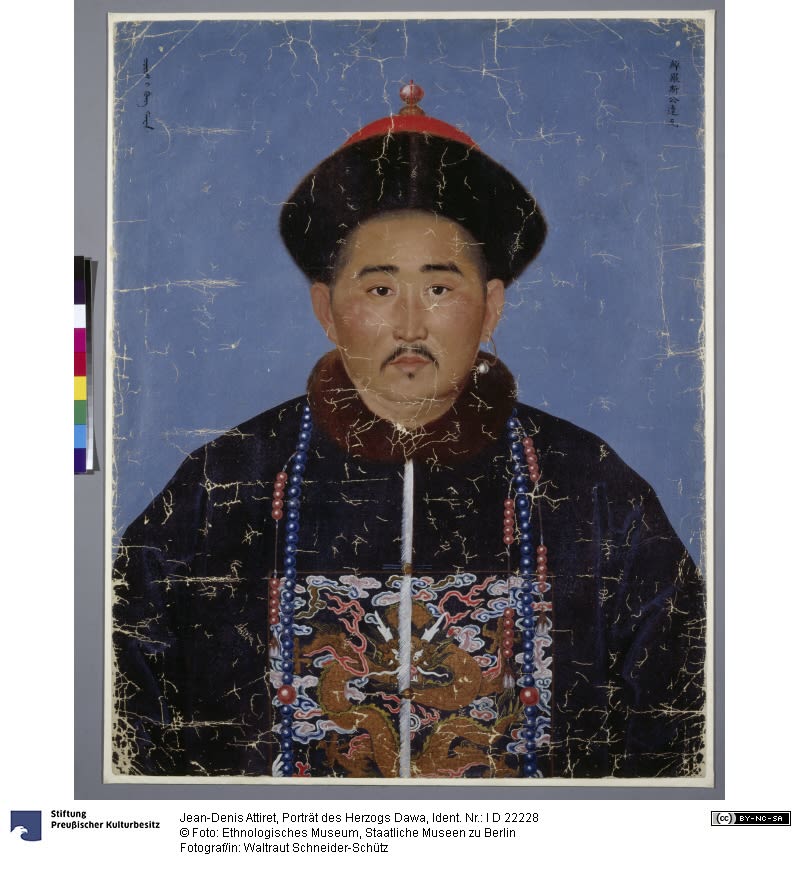
But the most famous Jesuit artist was Giuseppe Castiglione (1688-1766), better known in China as Lang Shining, who was a member of the imperial academy of arts. His fabulous roll paintings and portraits represent a genuine fusion of western and eastern art. He was also a personal friend of emperor Qianlong, who stands in history as one of China’s greatest emperors and a generous patron of art and science.
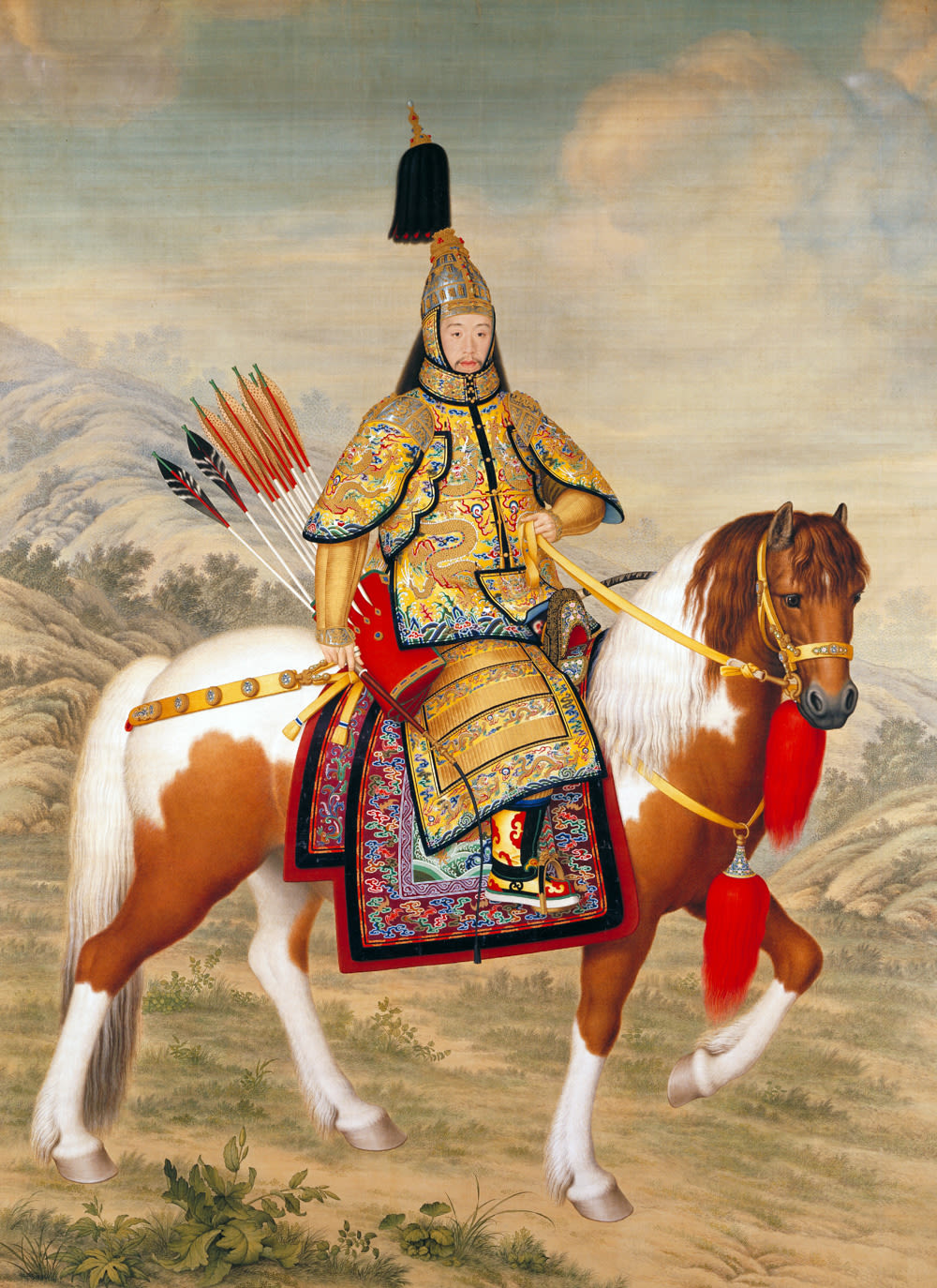
It was ultimately in the field of architecture that the Jesuits would create their grandest masterpieces in China. During the Qing dynasty, the Forbidden City was only used from November to February, as a Winter Palace. The rest of the year, the court spent time in various other places and mansions. But their favourite residence was situated north of the capital and called “Gardens of Perfect Brightness” (Yuanmingyuan), known today as the Old Summer Palace.

Inside the Old Summer Palace, Giuseppe Castiglione and the French Jesuit Michel Benoist (1715-1774) created a complex of pavilions and gardens inspired by French gardens and Baroque style architecture.
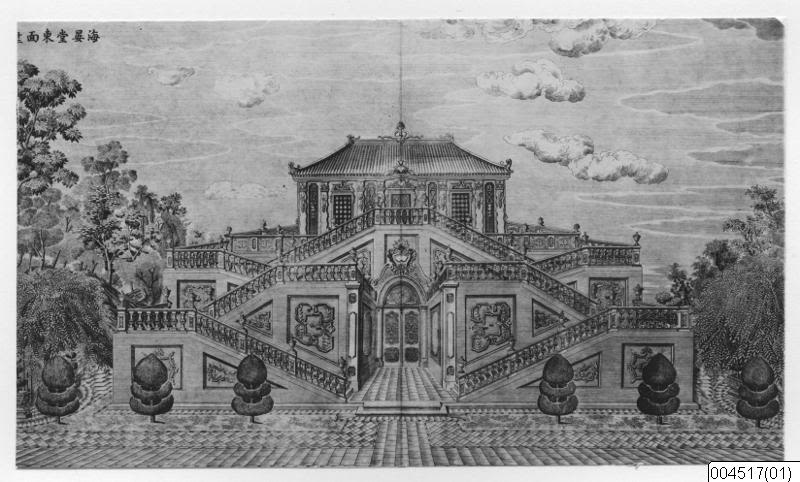
Also accomplished by the Jesuits were the so-called Western Mansions (Xiyang Lou) or the “Versailles of the East”: one of the most famous palaces of China. The estate included a labyrinth, a belvedere, pools and several fountains. One of the most famous water features was the “Water Clock”, consisting of twelve statues depicting Chinese zodiac animals spouting water to indicate the time.
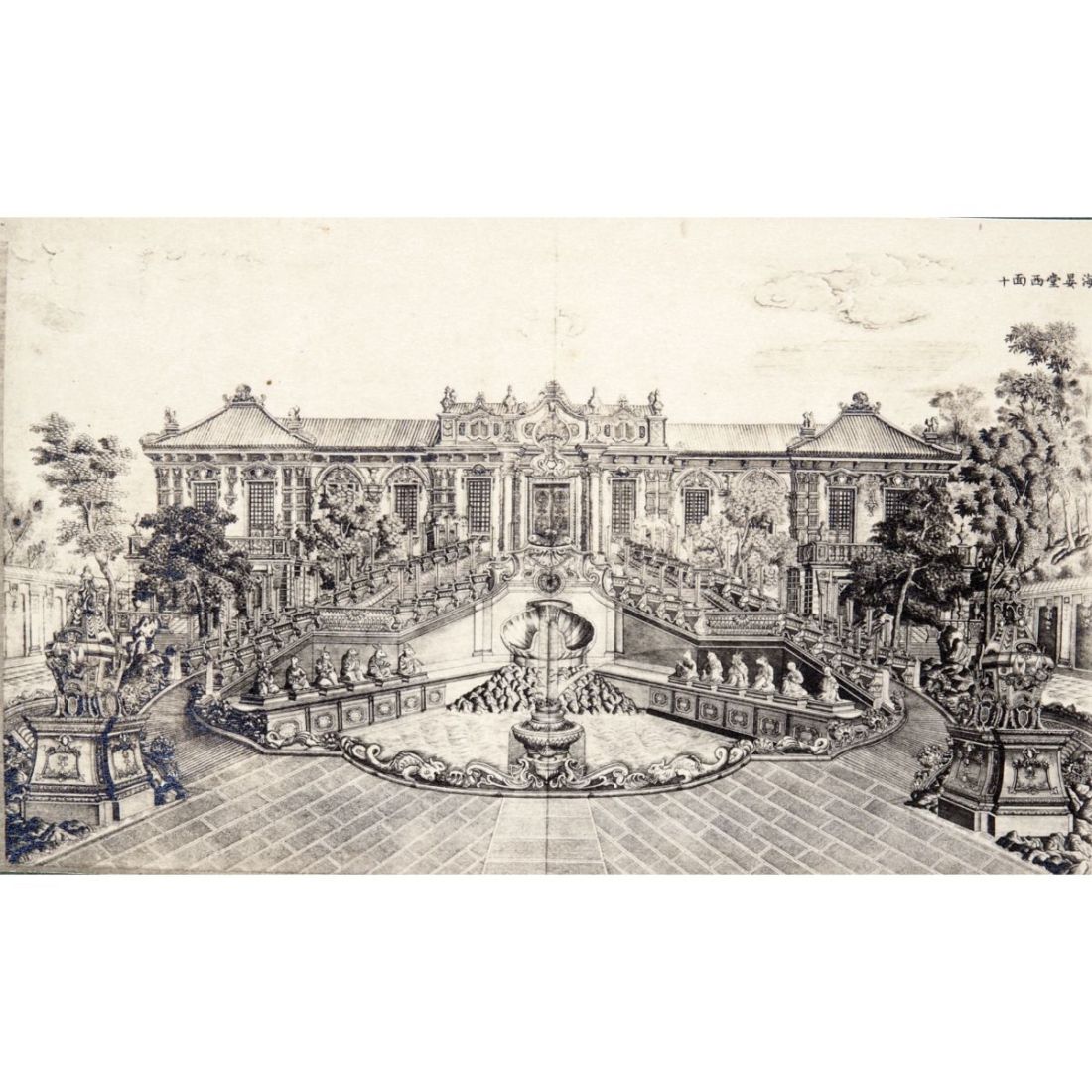
This complex was an interesting mixture of Chinese and Western styles, answering to the taste for western exotism that emperor Qianlong harboured, much in the same way Europeans were thrilled by Chinoiseries.

But not everything was perfect in the relationship between China and the ‘Soldiers of God’. A less elevated role was played by Jesuits operating as spies. Some were specifically dispatched to investigate how porcelain was produced. While both the Chinese and Europeans were interested in learning from each other when it came to science and technology, they didn't always see eye to eye on matters of religion. The “Chinese Rites controversy” perfectly illustrates the misunderstandings between these two cultures.
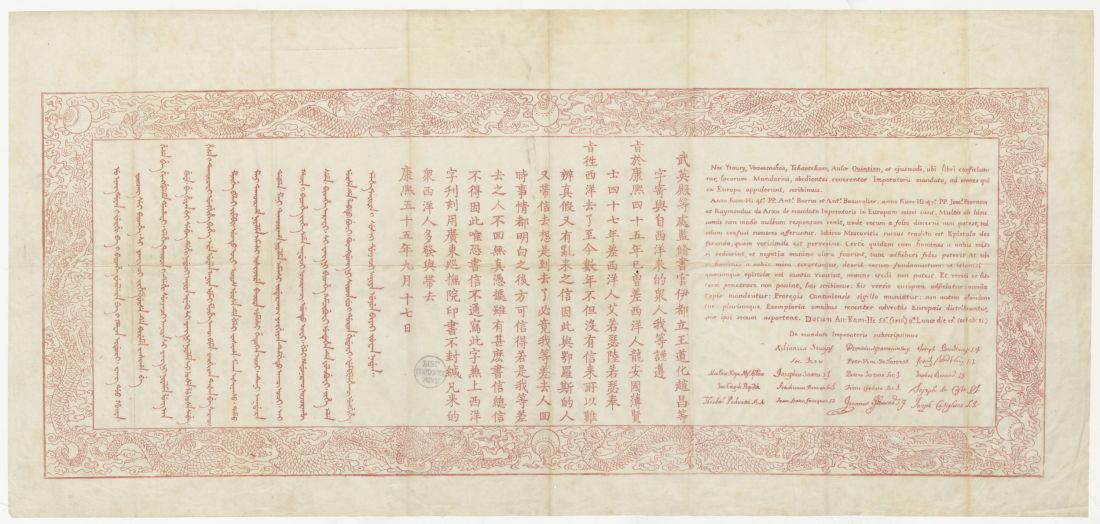
In 1715, Pope Clement XI criticized the fact that Chinese converts were allowed to continue to honor their family ancestors. In his view, these rituals were not compatible with catholic liturgical practices. The Jesuits tried to justify their approach, but the pope persisted in his opposition and wanted to eradicate the possibility of celebrating mass in Chinese instead of Latin as well. While Rome couldn’t understand the full extent of Chinese rituals, the emperor of China became angry, too, understanding that the Jesuits were still seeking to convert his people.
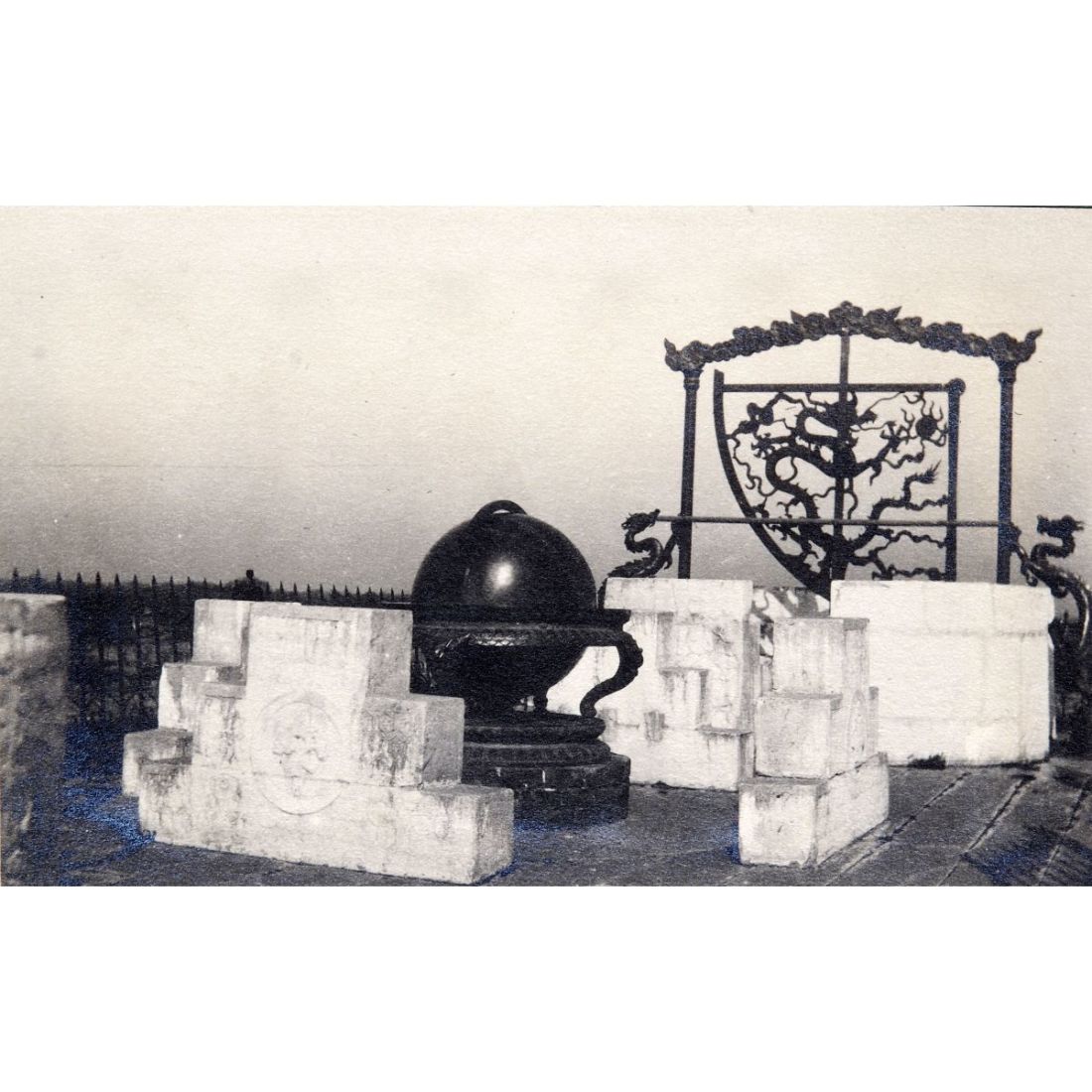
Remaining appreciative of the Jesuits’ knowledge of science and arts, the Chinese sovereign approved anti-Christian policies against the Chinese converts. In the end, Jesuits were banned from China in 1774, one year after the dissolution of their order in Europe. They were to return to China only in the 19th century. By then, power in China had been seized by the West, which was a much more favourable situation for the Jesuits' goals of conversion and of building schools, hospitals and orphanages. The last Jesuits fled China in 1949, when the communists came to power.

The collaboration between the Jesuits and the Chinese is a valuable testament to the benefits of two cultures working together, producing marvelous works of art and achieving important breakthroughs in science. Today, still, Europe and China collaborate in many domains - including scientific research and art - continuing the tradition started over 600 years ago.
STATISTICI
Numar de steaguri: 273
Record vizitatori: 8,782 (3.04.2011)
16,676 (3.04.2011)
Steaguri lipsa: 33
1 stat are peste 700,000 clickuri (Romania)
1 stat are peste 100.000 clickuri (USA)
1 stat are peste 50,000 clickuri (Moldova)
2 state au peste 20,000 clickuri (Italia, Germania)
4 state are peste 10.000 clickuri (Franta, Ungaria, Spania,, Marea Britanie,)
6 state au peste 5.000 clickuri (Olanda, Belgia, Canada, )
10 state au peste 1,000 clickuri (Polonia, Rusia, Australia, Irlanda, Israel, Grecia, Elvetia , Brazilia, Suedia, Austria)
50 state au peste 100 clickuri
20 state au un click

DE URMĂRIT
1.EDITURA HOFFMAN
https://www.editurahoffman.ro/
2. EDITURA ISTROS
https://www.muzeulbrailei.ro/editura-istros/
3.EDITURA UNIVERSITATII CUZA - IASI
https://www.editura.uaic.ro/produse/editura/ultimele-aparitii/1
4.ANTICARIAT UNU
https://www.anticariat-unu.ro/wishlist
5. PRINTRE CARTI
6. ANTICARIAT ALBERT
7. ANTICARIAT ODIN
8. TARGUL CARTII
9. ANTICARIAT PLUS
10. LIBRĂRIILE:NET
https://www.librariileonline.ro/carti/literatura--i1678?filtru=2-452
https://www.librarie.net/cautare-rezultate.php?&page=2&t=opere+fundamentale&sort=top
14. ANTICARIAT NOU
https://anticariatnou.wordpress.com/
15.OKAZII
https://www.okazii.ro/cart?step=0&tr_buyerid=6092150
16. ANTIKVARIUM.RO
17.ANTIKVARIUS.RO
18. ANTICARIAT URSU
https://anticariat-ursu.ro/index.php?route=common/home
19.EDITURA TEORA - UNIVERSITAS
20. EDITURA SPANDUGINO
21. FILATELIE
22 MAX
http://romanianstampnews.blogspot.com
23.LIBREX
https://www.librex.ro/search/editura+polirom/?q=editura+polirom
24. LIBMAG
https://www.libmag.ro/carti-la-preturi-sub-10-lei/filtre/edituri/polirom/
https://www.libris.ro/account/myWishlist
http://magiamuntelui.blogspot.com
27. RAZVAN CODRESCU
http://razvan-codrescu.blogspot.ro/
28.RADIO ARHIVE
https://www.facebook.com/RadioArhive/
29.IDEEA EUROPEANĂ
https://www.ideeaeuropeana.ro/colectie/opere-fundamentale/
30. SA NU UITAM
31. CERTITUDINEA
32. F.N.S.A
https://www.fnsa.ro/products/4546-dimitrie_cantemir_despre_numele_moldaviei.html
Evenimente
Anunturi
 Această retea este pusă la dispoziţie sub Licenţa Atribuire-Necomercial-FărăModificări 3.0 România Creativ
Această retea este pusă la dispoziţie sub Licenţa Atribuire-Necomercial-FărăModificări 3.0 România Creativ

Parteneri
Note
Hoffman - Jurnalul cărților esențiale
1. Radu Sorescu - Petre Tutea. Viata si opera
2. Zaharia Stancu - Jocul cu moartea
3. Mihail Sebastian - Orasul cu salcimi
4. Ioan Slavici - Inchisorile mele
5. Gib Mihaescu - Donna Alba
6. Liviu Rebreanu - Ion
7. Cella Serghi - Pinza de paianjen
8. Zaharia Stancu - Descult
9. Henriette Yvonne Stahl - Intre zi si noapte
10.Mihail Sebastian - De doua mii de ani
11. George Calinescu Cartea nuntii
12. Cella Serghi Pe firul de paianjen…
Creat de altmariusclassic Dec 23, 2020 at 11:45am. Actualizat ultima dată de altmariusclassic Ian 24, 2021.
Top Members
© 2024 Created by altmarius.
Oferit de
![]()
Embleme | Raportare eroare | Termeni de utilizare a serviciilor










Pentru a putea adăuga comentarii trebuie să fii membru al altmarius !
Alătură-te reţelei altmarius